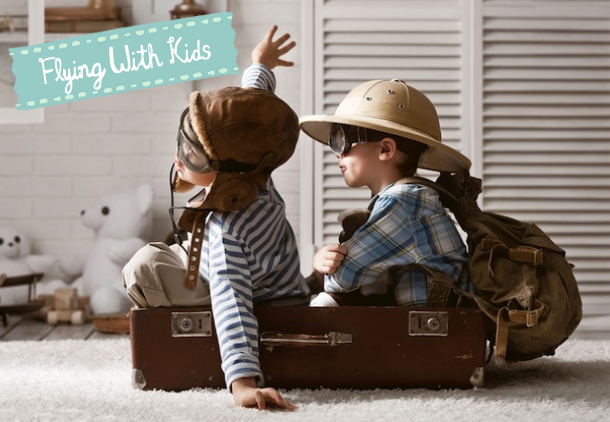
Travelling overseas can be exhausting, especially when you have little kids in tow, but keep in mind it’s not just tiring for the parents! When travelling through numerous time zones, babies and toddlers suffer jet lag like the rest of us. While it takes a few days for us to get back on track after a long haul flight, when you have a baby or toddler, it can double the trouble and last longer than it needs to. Here are some tried and tested strategies for getting small children onto new time zones and off to sleep without too much drama. Hopefully this will enable you to then get on with enjoying your vacation or settling back into home life much more quickly!
The Basics of Jet Lag
Most people find jet lag more difficult going east, so for example, if you are based in Asia and heading to Europe, chances are you’ll find it easier on the outward journey than the inbound one. US bound from the UK, the outward will likely be easier than when you arrive back in the UK. When calculating the time zone difference – especially if you are crossing the dateline – don’t worry about what day it is, only what time it is. The body clock is only bothered by time changes and not date changes.
The degree of difficulty in adjusting the body clock depends somewhat on the age of your little one, how much shut eye they got on the plane and how many time zones you have been through… but nobody escapes jetlag! Some just seem to feel its effects more than others. Keep in mind that how far you travel will determine how long it takes for your child to adapt fully into a good sleep and feeding pattern in the new time zone, i.e. it will take longer the more time zones you have passed through (one time zone = one hour).
Going from East to West
If you’re heading west, you will – in general – be going back in time, but your baby or toddler doesn’t know this and they’ll be wanting their usual routine at the home base times. For example, arriving in Europe at 6am is around lunchtime in Singapore, so your kids will expect to have lunch when they arrive. Fast forward to around 2pm in Europe and their body will be telling them it’s time to sleep (8pm in Singapore).
- Give your child the opportunity for a peaceful nap in a cot/bed for up to 3 hours at this time to refresh and help your child get through the rest of the day in a reasonably good mood until the the new time zone bedtime. Go through their usual bedtime routine at this new time, which will help create the normal conditions they’re used to for tucking in at night.
- Be aware that it might be light for longer in the evenings in your new time zone, so you may want to ensure that the curtains/blinds are sufficient enough for creating dark, night time conditions to make it easier for your child to fall asleep.
- Take into account any changes in temperature and dress your child for bedtime accordingly.
- In the middle of the first and probably the second night in the new time zone, your child is likely to wake up at the time that equates to morning back home, so for example, anywhere from 1-3am. This is perfectly understandable as your child’s body clock is telling them it’s morning! They’re also likely to feel hungry in the middle of the night as it would normally be breakfast time. Be sure to keep lights either dim or turned off completely to stimulate night time conditions and maybe put a quiet and safe toy (nothing too stimulating) in your toddler’s cot that they can play with until they hopefully drift off back to sleep! You may need to offer a snack and/or a small cup of milk.
- Try to avoid taking your child into the living room and turning on the lights, as this will further encourage alertness and wake the body up more, making it increasingly difficult for your child to go back to sleep. If your baby seems hungry, give them a feed – under night time conditions – in the room where the cot is and change their nappy if necessary. Then, help your baby resettle into their cot.
Going from West to East
Alternatively, if you’re traveling east, you’ll be generally going forward in time and your baby or toddler will be full of energy at their usual bedtime. For example, coming from London to Asia, having been used to a 8pm London bedtime, your child will not be properly ready for their night’s sleep until around 3am! If they have not slept too long on the flight, you may be able to get them into bed at around 9-11pm, but keep in mind that it might be quite a bit later on the first night.
- Don’t worry, go through the usual bedtime routine and bring bedtime forward by an hour each night until you get back to their ‘normal’ sleep time.
- Ensure your child does not sleep in too long despite the later bedtime, allowing a couple of extra hours lie in to start with but moving the wake up time earlier as you move the bedtime earlier.
- Any night feeds they usually have may be a bit out of sync for several days, but this will get back on track gradually as the bedtime and wake up time move back to fit the time zone you are now in.
- Don’t worry too much about exact timings at this stage — everyone is tired so make it easier on yourself by not imposing anything too strict immediately. Go with the flow a bit, but gradually get the timings back on track.
- Keep baby’s usual pattern of feeds, awake time and sleeping time but expect that timings may be in transition for several days as your baby gets used to the new time zone.
- Take your child out into the daylight and keep to normal daytime activities as this will help reset their biological clock.
For travel in either direction, fit naps in at appropriate times during the transition period, with your baby or toddler’s usual intervals between naps. Aim to get naps in at the usual times by around day 3-4 in the new place.
General Tips for Getting Good Sleep
- Keep to the normal bedtime and nap time routines and sleeping conditions as much as possible.
- Take familiar sleep cues with you, such as a favourite bedtime book, a sleep toy or a comforter. If you have enough room in your suitcase, take your kid’s usual bath towel and cot sheet, which smells of home and often helps babies and toddlers adjust in the first few days of sleeping in a new location.
- Make sure your little one is not having too much daytime napping than usual after the first day.
- If your child is awake in the middle of the night, keep the night time conditions and offer a snack or milk feed only if necessary.
- Wake your child up gently in the morning, take them out in the daylight to help reset their biological clock and don’t let them lie in too long to make up for lost sleep.
- Ensure the child’s bedroom environment is safe, the mattress firm and the temperature of the room comfortable but not too warm.
For specific information for your baby or toddler, email [email protected] or visit her website www.infantsleepresources.com.






 View All
View All




 View All
View All










 View All
View All









